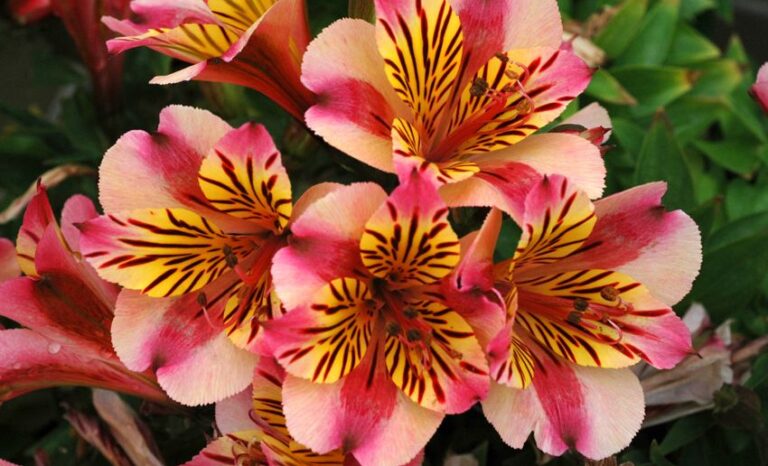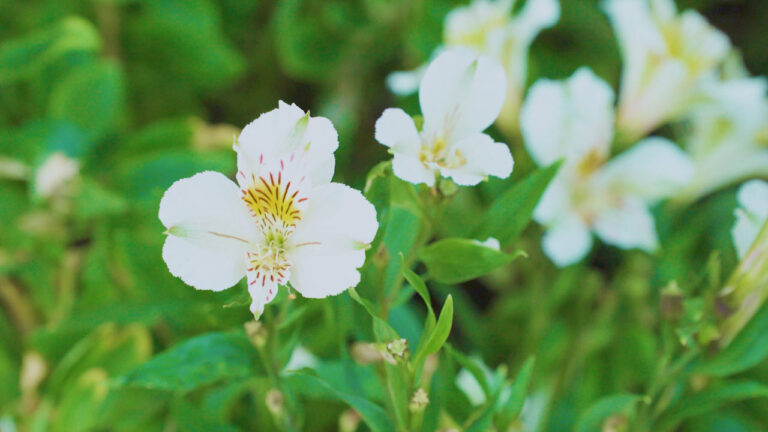Gardening tips: how to grow and care for your alstroemerias (princess lilies)
The alstroemerias, commonly known as Peruvian lily, princess lily or lily of the Inca, are popular and hardy cottage garden plants. Learn how to best care for them.

Alstroemerias, or princess lilies, are vibrant, long-flowering perennials that bring lasting beauty to any garden. Beloved for their tall stems and striking blooms, they make excellent cut flowers and are a staple in both cottage gardens and container displays.
To help you get the most from these hardy plants, we turned to IRT Maintenance Gardener Brian Wardhaugh, who shares his expert tips on how to grow, care for, and enjoy princess lilies throughout the seasons. Whether you're planting in garden beds or pots, these insights will ensure your alstroemerias thrive with minimal fuss and maximum colour.
Why alstroemerias are a garden favourite
These colourful perennials are valued for:
- Prolific flowering across the seasons
- Long stems, making them ideal as cut flowers
- Hardy nature in suitable climates
Brian recommends pairing alstroemerias with limonium perezii (sea statice) in arrangements, as both hold up beautifully in a vase for weeks.
Compact varieties: princess lily
Over the last decade, new compact varieties (growing to just 30cm tall) have been developed under the umbrella term princess lily. These come in a wide range of vibrant colours and are perfect for:
- Pots and containers
- Edging borders
- Mixing with annuals and colourful perennials
Brian’s top picks:
- A bright yellow variety
- The pure white 'Claire' cultivar
Discover fun and different ways to stay active in retirement

Here's how to get the most out of these vibrant plants:
1. Sunlight
Princess lilies thrive in locations with full morning sun and shade in the afternoon. These hardy flowers bloom from spring to summer but once the temperatures get too warm, they cease blooming until the weather cools down again.
2. Soil
Alstroemeria enjoy well-drained soil. Soil that is water-logged can lead to oxygen deficiency, resulting in drowned and rotted roots. To improve your soil drainage, raise your garden beds or mix in organic matter such as manure or compost into your soil.
3. Water regularly
Princess lilies benefit from a regular watering schedule. Your soil should be consistently moist but not soggy as this can lead to rotting roots.
4. Prune when needed
As your princess lilies fade out of bloom, look to deadhead your flowers. Deadheading encourages plants to set more flower buds and helps your flowers to conserve energy. It is best to remove the entire stem, by twisting and pulling it out of the ground. This not only keeps your garden tidy, but allows new stems to grow and replace old ones.
5. Watch for pest and disease
Alstroemerias are generally hardy, but keep an eye out for:
- Slugs and snails: Especially after rain or in damp areas
- Aphids or thrips: Check new growth and undersides of leaves
- Crown rot or fungal spots: Ensure good air circulation and avoid overhead watering
Tip: Companion planting with herbs like basil or flowers like marigolds may help deter some pests naturally.
6. Protect from extreme weather
These plants can be sensitive to:
- Frost: Use a garden fleece or mulch heavily during winter if you live in a cooler climate
- Extreme heat: Provide afternoon shade and increase watering if needed
Tip: Container-grown princess lilies can be moved to sheltered spots in extreme conditions, giving you more control over their environment.
7. Feed with light, regular nutrition
Alstroemerias benefit from a light feeding schedule, especially during the growing season.
Fertiliser tips:
- Use a balanced, slow-release fertiliser (like 10-10-10) in early spring
- Supplement with liquid seaweed or fish emulsion every few weeks while flowering
- Avoid high-nitrogen fertilisers, as they promote leaf growth at the expense of blooms.
Discover the benefits of living in a retirement village

Retirement living at IRT
Enjoy the benefits of gardening and an active lifestyle in one of IRT’s retirement villages. If you’re interested in downsizing your house and upsizing your life, IRT has more than 30 retirement villages across NSW, Qld and ACT. Find out more about the possibilities of village life and how one of our independent living communities can suit you and your unique needs.
Find out moreSubscribe to our newsletter
You may also like
What is the difference between CHSP and Home Care Packages?
If you’re interested in getting some home care, you’ve likely heard of the terms ‘Home Care Package’ and ‘Commonwealth Home Support Program.’
Your guide to moving into a retirement village
When the decision to move into a retirement village has been made, the thought of packing up your old home and moving in to your…


